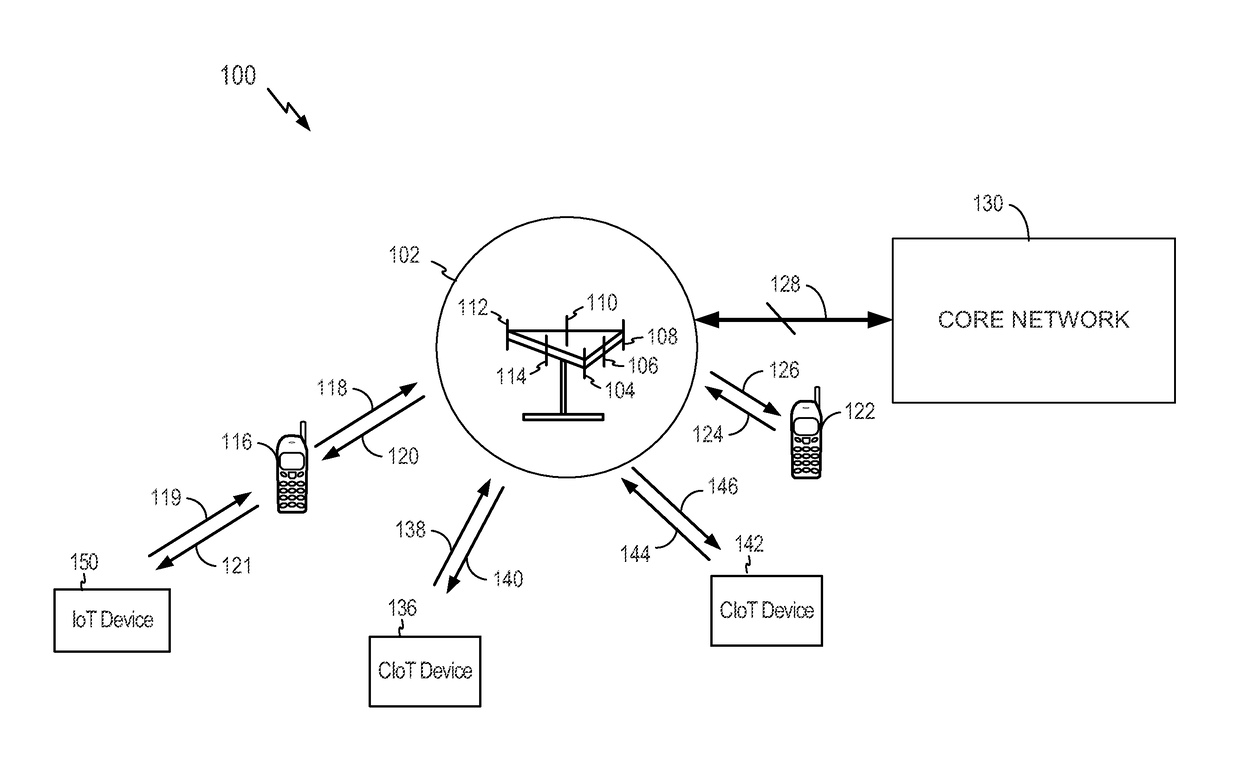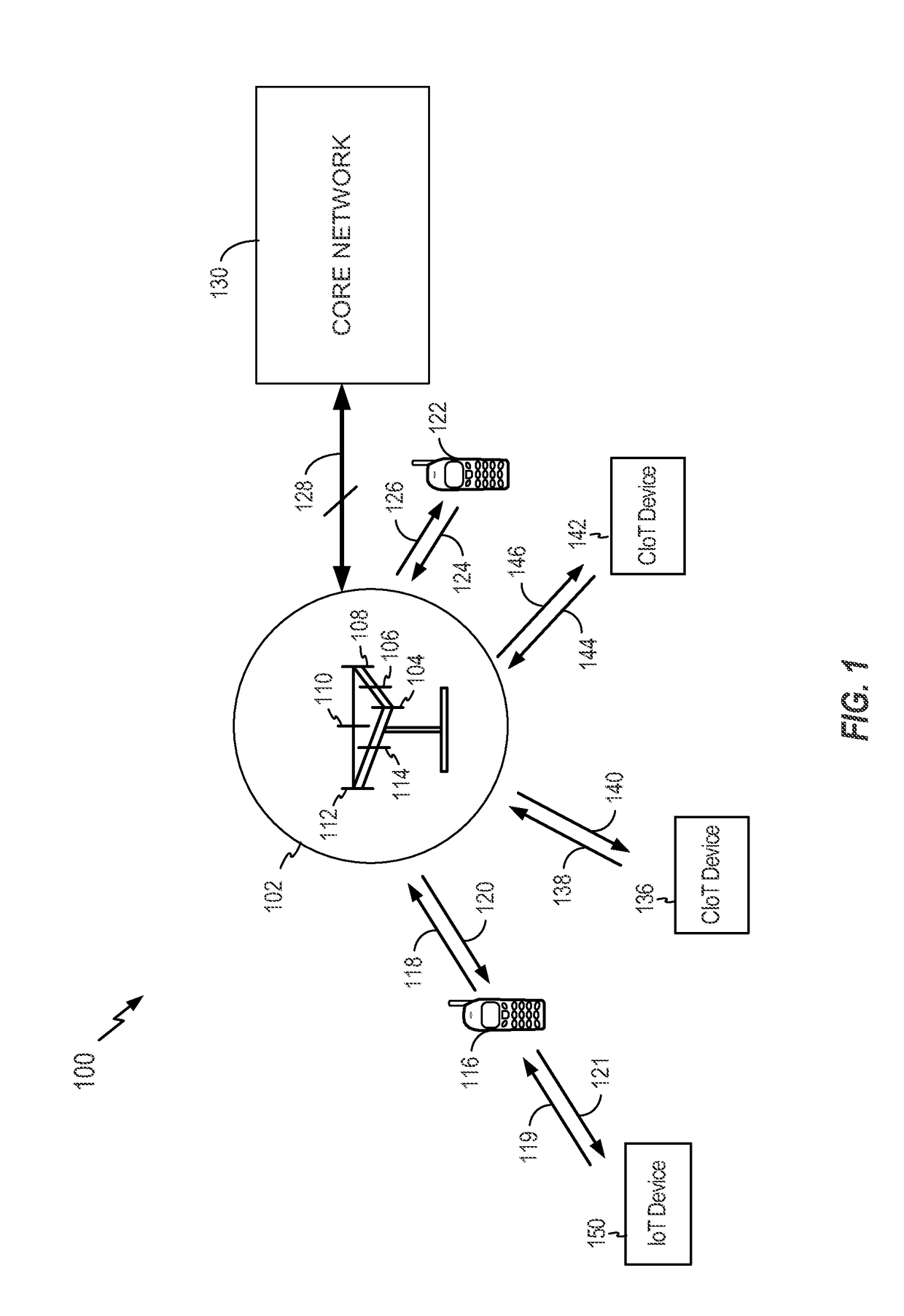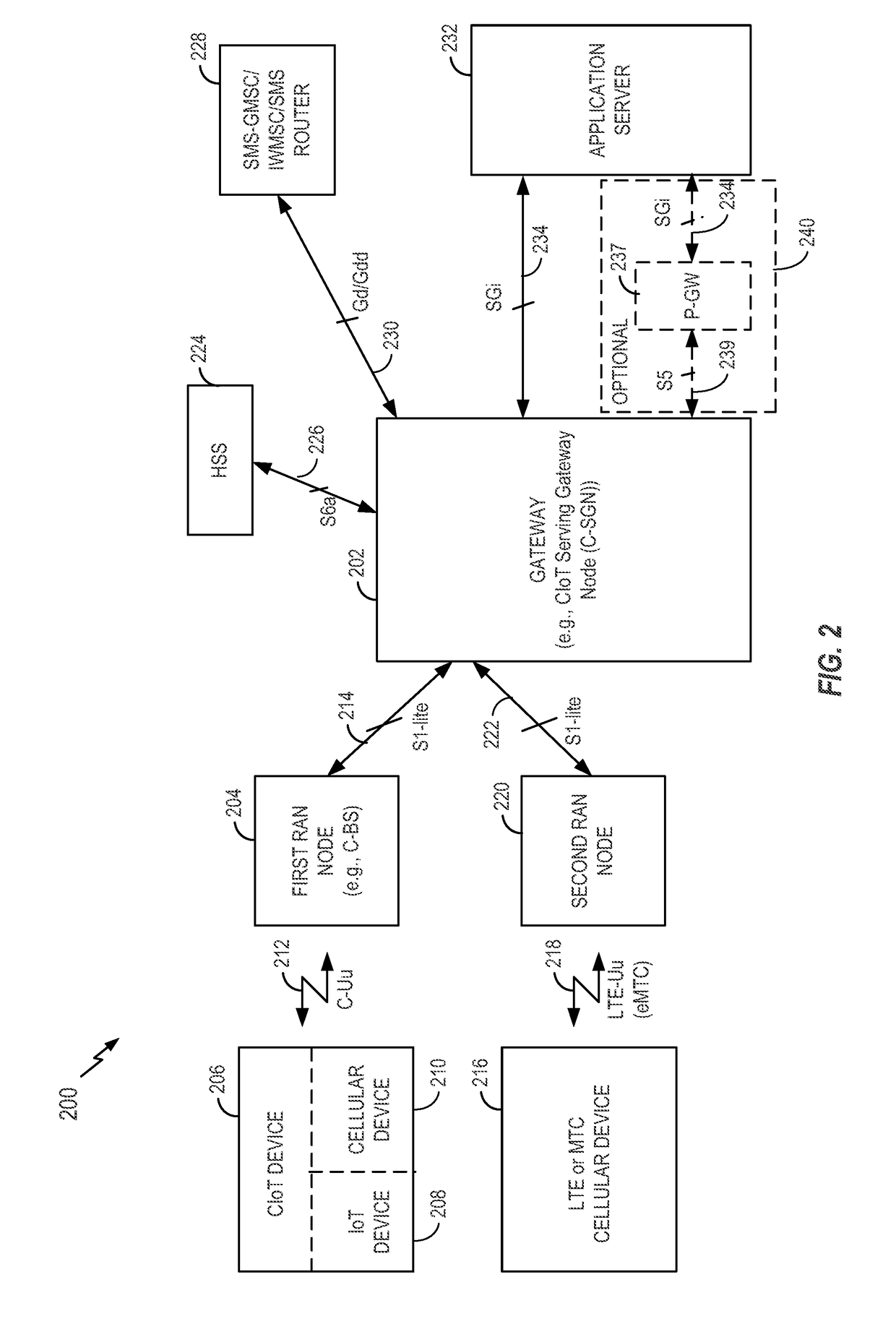Stateless access stratum security for cellular internet of things
a stateless access and internet of things technology, applied in the field of wireless communication, can solve the problems of unnecessary radio resources being released, overhead bears on added latency, management and session management procedures may incur substantial overhead,
- Summary
- Abstract
- Description
- Claims
- Application Information
AI Technical Summary
Benefits of technology
Problems solved by technology
Method used
Image
Examples
Embodiment Construction
[0038]IoT devices may include, but are not limited to, any piece of equipment with capabilities of communication and the optional capabilities of sensing, actuation, data capture, data storage, and / or data processing. A cellular device (e.g., a chip component, a wireless device, a mobile device, a user equipment (UE), a terminal) may interface with an IoT device. An interface may be achieved directly (e.g., the IoT device may be integral to the cellular device) or indirectly (e.g., the IoT device may interface to the cellular device via a local area network such as Bluetooth). For ease of reference, it will be understood that any reference to a cellular device made herein is a reference to a cellular device interfaced to an IoT device (i.e., a CIoT device), unless otherwise specified.
[0039]As used herein, the word “obtain” may mean derive, generate, compute, retrieve, receive, request, etc., and may encompass obtaining locally and / or obtaining remotely. As used herein, the word “obt...
PUM
 Login to View More
Login to View More Abstract
Description
Claims
Application Information
 Login to View More
Login to View More - R&D
- Intellectual Property
- Life Sciences
- Materials
- Tech Scout
- Unparalleled Data Quality
- Higher Quality Content
- 60% Fewer Hallucinations
Browse by: Latest US Patents, China's latest patents, Technical Efficacy Thesaurus, Application Domain, Technology Topic, Popular Technical Reports.
© 2025 PatSnap. All rights reserved.Legal|Privacy policy|Modern Slavery Act Transparency Statement|Sitemap|About US| Contact US: help@patsnap.com



